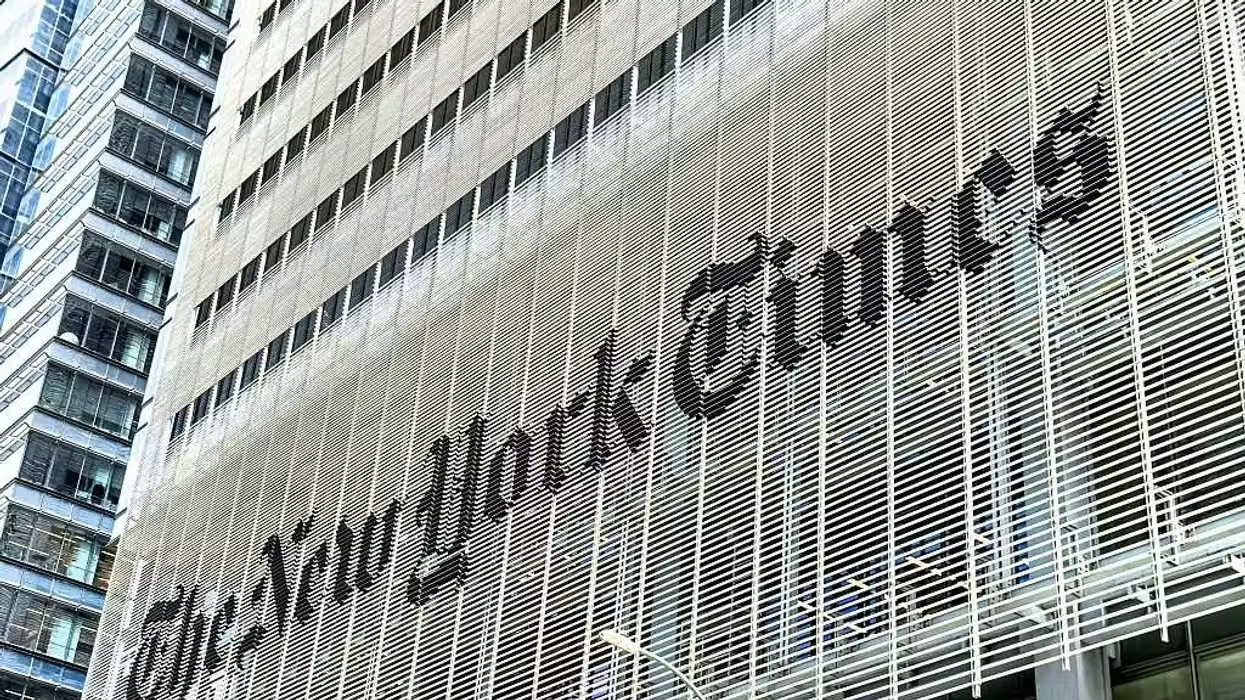
© 2026 Blaze Media LLC. All rights reserved.
"demonstrates that encouraging businesses to prosper and create jobs is the most important function of local government"
Many qualities separate the best-run and worst-run cities. But perhaps the most important is access to jobs. The economies of the best-run cities fall into two categories. They either have a booming industry or are near other major urban areas that create employment opportunities. The worst-run cities simply do not have the same access to jobs. 24/7 Wall St.’s analysis of the best-run and worst-run cities demonstrates that encouraging businesses to prosper and create jobs is the most important function of local government.
24/7 Wall St. has completed its first annual ranking of the best-run and worst-run cities in America. They reviewed the local economies, fiscal discipline and standard of living of the 100 largest cities by population to determine how well each is managed. Based on these data, 24/7 Wall St. ranked the 100 cities from the best to worst run.
Four of the 10 best-run cities are the economic centers of their regions. Madison, Wis., is one of the best-run cities on our list, and its businesses employ the most people in the area. Six of the best-run cities serve as residential communities for larger metropolitan areas that are the economic centers. Scottsdale, Ariz., is a large city in its own right, but is often referred to as a suburb of Phoenix.
Frequently, these so-called “edge cities” have also developed their own vibrant economies. Plano, Tex., is part of the Dallas-Fort Worth metropolitan area. However, the city has a booming tech community and large offices of major corporations such as HP and Dell.
Nine out of the 10 worst-run cities on this list rely on older industries that are shrinking. Hialeah, Fla., was an important textile hub in the 1960s through the 1980s. Cleveland, Ohio, was one of the nation’s leaders in steel production. Detroit, Mich., of course, manufactured cars. Since their booms, all of these cities have shed tens of thousands of jobs.
Many of the worst-run cities have been in bad shape for years. While residents who were able to moved away, those without resources remained. As a result, the cities’ expenses remained high while their tax bases shrunk. The populations of four of the worst-run cities decreased between 2000 and 2010.
While there is a strong relationship between high median income and high ranking, there is an even stronger relationship to poverty. While a majority of the best-run cities have more households making over $200,000 per year than the national average, none of the top 10 cities have high poverty rates. For example, Lincoln, Neb., has only the 33rd highest median income among the largest cities, but the 11th lowest percentage of households making less than $10,000 per year.
For the most part, the best-run cities manage their debt and resources well. The worst-run cities do not. Moody’s provided credit ratings and analysis for 16 of the 20 cities on our list. The two cities that are the best-run and that do not have credit ratings, Fremont and Irvine, Calif., do not have a need to finance government projects through debt. Their wealthy and large tax base would suggest that is the case. Hialeah, Fla., one of the worst-run cities according to our ranking, told 24/7 Wall St. that it did not issue city debt because it had other debt instruments to raise money for government projects. San Bernadino, Calif., the other worst-run city without a credit rating, did not return 24/7 Wall St.’s calls.
These are the best- and worst-run cities in America.
The Best-Run:
10. Plano, TX.
 Violent crime per 1,000 people: 1.81 (7th lowest)
Violent crime per 1,000 people: 1.81 (7th lowest)
Poverty rate: 7.9 percent (5th lowest)
Credit rating: AAA
Population: 261,697
Plano, a wealthy suburb of Dallas, was founded in 1873. The city has one of the lowest violent crime rates in the country, partly because it can afford a sizable and educated police force. Plano is one of the few cities in the U.S. that require a four-year college degree of its police officers.
Plano’s population is the third wealthiest of the cities examined on this list, with a median household income of nearly $80,000 a year. Just 7.9 percent of the area’s residents live below the poverty line, and just 1.3 percent of households make less than $10,000 per year, the lowest rate among all major U.S. cities. Moody’s has assigned a perfect AAA rating to Plano’s general obligation credit, citing “an affluent and large tax base” and “strong financial management.”
9. Chandler, AZ.
 Violent crime per 1,000 people: 2.86 (14th lowest)
Violent crime per 1,000 people: 2.86 (14th lowest)
Poverty rate: 8.2 percent (6th lowest)
Credit rating: AAA
Population: 236,775
Chandler is one of the newest large cities in the U.S. The city was incorporated in 1951, but the population did not truly expand until very recently. In 1980, Chandler, which is located within the greater Phoenix metropolitan area, had a population of 30,000. Now, it has a population of 247,000. There are countless examples of cities that experienced this level of growth, but few, especially in the Southwest, have maintained a healthy economy through the recession.
In 2010, the city had the ninth-lowest unemployment rate among the largest cities, and the sixth-lowest poverty rate. Chandler has been assigned a perfect AAA stable rating by Moody’s.
“The stable credit outlook reflects Moody’s expectation that management will continue to maintain favorable financial operations and strong reserve levels despite ongoing economic weakness,” the credit agency wrote.
8. Scottsdale, AZ.
 Violent crime per 1,000 people: 1.53 (6th lowest)
Violent crime per 1,000 people: 1.53 (6th lowest)
Poverty rate: 7.9 percent (4th lowest)
Credit rating: AAA (stable outlook)
Population: 217,977
Like Chandler, Scottsdale is a prosperous suburb of Phoenix. It has the seventh-highest median income in the country, the highest percentage of high school graduates, and is among the top 10 for unemployment and health insurance coverage. However, because of its close proximity to Phoenix, home values dropped substantially during the recession.
Nevertheless, the city has managed to maintain healthy employment and low poverty, as well as a stable AAA rating — the best a city can receive.
“Scottsdale has weathered the recession with our AAA bond ratings intact because we cut where we need to cut and we invest where we need to invest,” said Mayor W. J. Lane.
7. Chesapeake, VA.
 Violent crime per 1,000 people: 3.84 (19th lowest)
Violent crime per 1,000 people: 3.84 (19th lowest)
Poverty rate: 7 percent (2nd lowest)
Credit rating: AA1
Population: 222,986
The city of Chesapeake was founded in 1963, although the area itself has had people living there since the late 17th century. Chesapeake is located on the southern edge of the City of Norfolk. It is also within striking distance of the city of Virginia Beach, which itself is among the best-run cities. These two adjacent cities provide sources of employment for Chesapeake residents. With few urban areas, Chesapeake has relatively low crime and unemployment, as well as the second-lowest poverty rate in the U.S. However, the city has a credit rating of AA1, rather than AAA, and is not in the top 20 percent for health insurance coverage.
See the other best-run cities at 24/7 Wall St.
The Worst-Run:
10. Hialeah, FL.
 Violent crime per 1,000 people: 4.36 (26th lowest)
Violent crime per 1,000 people: 4.36 (26th lowest)
Poverty rate: 22.1 percent (35th highest)
Credit rating: not rated
Population: 225,461
Hialeah is the sixth-largest city in the state, and yet it receives little press attention, largely because it is overshadowed by the neighboring city of Miami. In many ways, Hialeah is an improvement on its larger neighbor, posting the 26th lowest violent crime rate in the country, as well as the third-lowest vacant homes rate, at just 5 percent.
However, Hialeah also has a 12-month unemployment rate of more than 15 percent — higher than Miami and all but a few of America’s largest cities. The city, which has grown very quickly over the past several decades, has one of the lowest percentages of adults with health insurance, at 28.6 percent.
9. North Las Vegas, NV.
 Violent crime per 1,000 people: 8.93 (28th highest)
Violent crime per 1,000 people: 8.93 (28th highest)
Poverty rate: 18.0 percent (35th lowest)
Credit rating: A2 (negative outlook)
Population: 217,304
The housing market of North Las Vegas plunged 50.9 percent from 2007 to 2010. In 2010, one in every five homes in the city was foreclosed upon, according to RealtyTrac. On top of that, the North Las Vegas Housing Authority misappropriated public money for years meant to help low-income residents. It appears that the soft housing market will continue to hurt city coffers. One of its major revenue sources — property taxes — is expected to fall by over a fifth in 2011 in the county. To reduce spending, the city cut or froze more than 800 positions in recent years.
The city has a credit rating of A2 from Moody’s, which the agency attributes to its “continued economic weakness and persistent financial challenges,” as well as “the city’s structurally imbalanced operations and reliance on financial reserves” used to support government operations.
8. Fresno, CA.
 Violent crime per 1,000 people: 6.26 (48th highest)
Violent crime per 1,000 people: 6.26 (48th highest)
Poverty rate: 30.2 percent (9th highest)
Credit rating: A3 (negative outlook)
Population: 496,147
Fresno, which was incorporated in 1885, is California’s largest inland city. Like much of the state, the city’s home values declined by more than 30 percent between 2007 and 2010.
However, the vacancy rate in the city, at 9.8 percent, is better than average. Fresno’s 12-month average unemployment rate was the fifth-highest among the largest cities in the U.S. Also, more than 30 percent of the population lives below the poverty line. In October, Moody’s downgraded the city’s long-term debt rating to A2, citing an increasing budget gap and weak financial reserves.
7. St. Louis, MO.
 Violent crime per 1,000 people: 17.47 (2nd highest)
Violent crime per 1,000 people: 17.47 (2nd highest)
Poverty rate: 27.8 percent (13th highest)
Credit rating: AA3 (stable outlook)
Population: 319,156
St. Louis has had a hard time controlling violent crime. With 17.47 incidents per 1,000 residents in 2010, the city has the second highest rate of violent crime in the country. This is due in part to the city’s high poverty rate of 27.8 percent and its median income of $32,688, which is the 10th lowest out of the 100 largest cities. Additionally, nearly 20 percent of housing units in the city are vacant. All of these measures influence government revenues.
Despite this, St. Louis has managed its finances fairly well. While Moody’s credit score is AA3, the credit agency also reports that the city faces a continued weakening of resident income levels, high unemployment rates and a decreasing population.
6. Stockton, CA.
 Violent crime per 1,000 people: 13.81 (6th highest)
Violent crime per 1,000 people: 13.81 (6th highest)
Poverty rate: 23.0 percent (27th highest)
Credit rating: Baa1 (negative outlook)
Population: 292,747
Stockton is part of the inland area that also contains Fresno. Stockton was one of the hardest-hit by the burst housing bubble. In 2007, median home value in the city was $364,700. By 2010, that number declined more than 50 percent to $171,500.
This massive drop — the second-largest decline among all major cities — has led to large-scale foreclosures and an increasingly dire economic situation. Stockton has the sixth-highest violent crime rate in the country among major U.S. cities, as well as the second-highest average unemployment rate, at more than 20 percent. The city currently has a large debt and a weak economy.
See the other worst-run cities at 24/7 Wall St.
*[Note on methodology: Researchers at 24/7 Wall St. looked at data from a number of sources. The Bureau of Labor Statistics provided unemployment data. The average rate for the most recent 12 months was used for our ranking. Credit ratings were provided by Moody’s Investors Services. The FBI’s Uniform Crime Report provided violent crime rates by city. They also relied on the U.S. Census Bureau’s American Community Survey for median household income, the percentage of the population below the poverty line, high school completion for those 25 and older, percentage of the population without health insurance and the change in occupied home values from 2007 to 2010. Once they reviewed the sources and compiled the final metrics, they ranked each city based on its performance in all the categories. A few cities did not have credit ratings or violent crime rates; these were not rewarded or penalized for the missing data.]
Want to leave a tip?
We answer to you. Help keep our content free of advertisers and big tech censorship by leaving a tip today.
Want to join the conversation?
Already a subscriber?
more stories
Sign up for the Blaze newsletter
By signing up, you agree to our Privacy Policy and Terms of Use, and agree to receive content that may sometimes include advertisements. You may opt out at any time.
Related Content
© 2026 Blaze Media LLC. All rights reserved.
Get the stories that matter most delivered directly to your inbox.
By signing up, you agree to our Privacy Policy and Terms of Use, and agree to receive content that may sometimes include advertisements. You may opt out at any time.






